In the modern game, few positions have evolved as dramatically as that of the fullback. Once defined by discipline and defensive solidity, today’s wide backs — whether fullbacks in a back-four or wingbacks in a back-three — are among the most tactically complex and physically demanding roles on the pitch.
A scout’s task is no longer simply to identify defenders who can tackle and cross. The modern wide back must defend in multiple contexts, adapt to different heights of the defensive line, contribute to build-up play under pressure, and add genuine attacking value in the final third.
This article breaks down the four main competencies used to assess fullbacks and wingbacks at a professional level — helping coaches, analysts, and scouts identify profiles that fit their team’s tactical requirements.
1. Defending in a High Line
In teams that defend aggressively and maintain a high backline, fullbacks are constantly involved in two distinct but interconnected defensive tasks: pressing forward and protecting space in behind.
Pressing Forward
Modern fullbacks must recognize pressing cues instantly. When the ball travels wide to the opponent’s fullback or winger, they are often the trigger for the team’s high press. The ideal wide defender times their approach to force play backward or inside, while maintaining control of their body position to avoid being eliminated by a single touch.
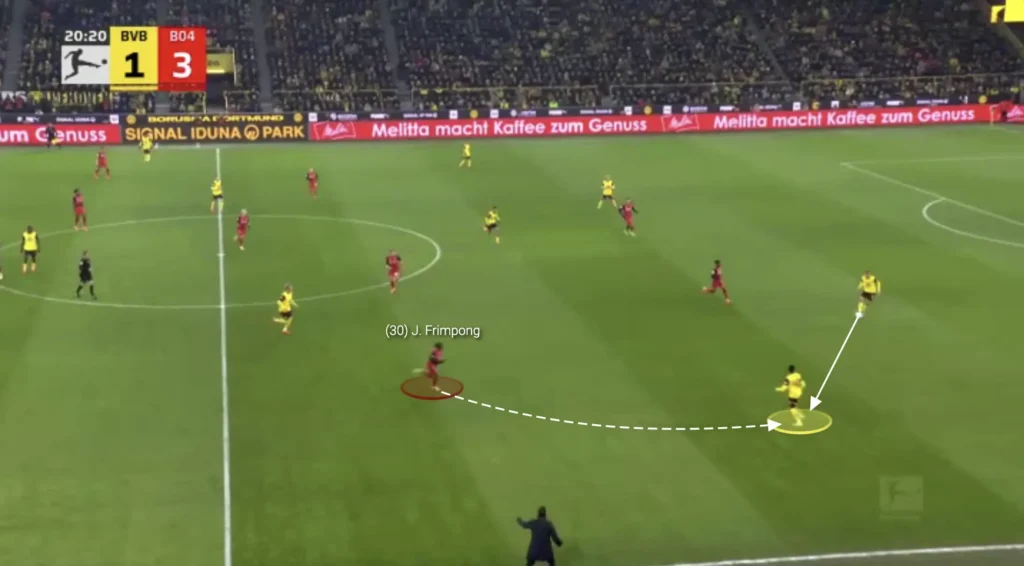
Scouts look for acceleration over short distances, compact body posture, and anticipation — the ability to read whether to commit forward or delay and contain. Players like Kyle Walker or Jeremie Frimpong excel here, using explosive pace to engage early and still recover if bypassed.
Defending the Space in Behind
Defending a high line also requires awareness of what’s behind. The best wide defenders combine sprint speed with intelligent positioning — constantly checking the shoulder to monitor runners and adjusting their line with the center-backs.
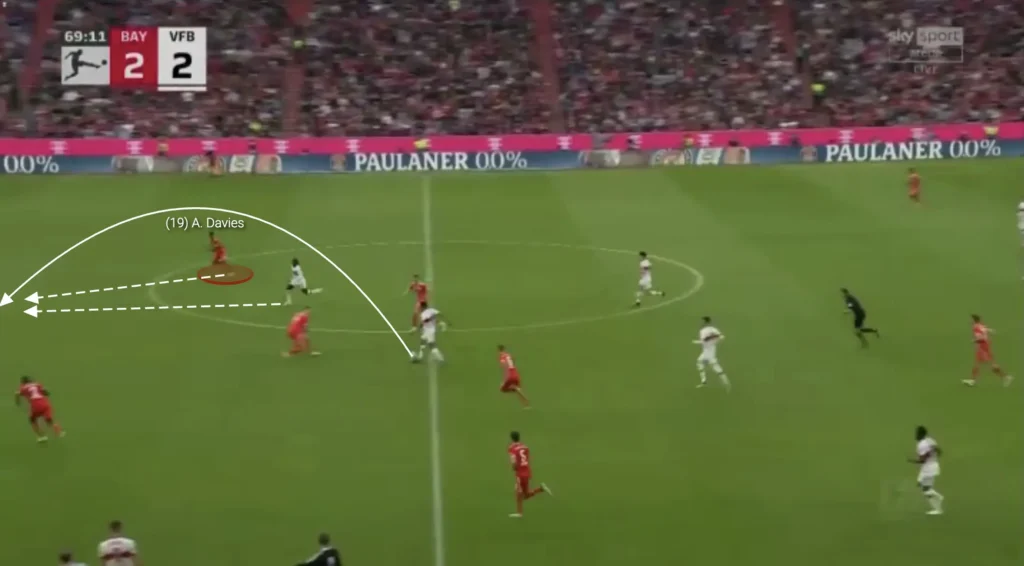
This is especially crucial when facing long diagonals or direct passes behind the defense. Scouts value players who can cover the space efficiently, use their body to protect the ball under pressure, and manage 1v1 recovery duels. Fullbacks who can defend large spaces alone, like Theo Hernández or Alphonso Davies, are key assets for transition-heavy systems.
2. Defending in a Low-Block
When the team sits deeper, the wide back’s responsibilities change dramatically. The emphasis shifts from space management to duel dominance and defensive decision-making inside and around the box.
Defensive 1v1s and Blocking Actions
Low-block defending is about patience and control. The wide back must defend the dribble without diving in, using timing, balance, and body orientation to force the opponent wide or backward. Scouts should observe how often the player gets beaten, whether they delay effectively, and how well they recover positioning after an engagement.
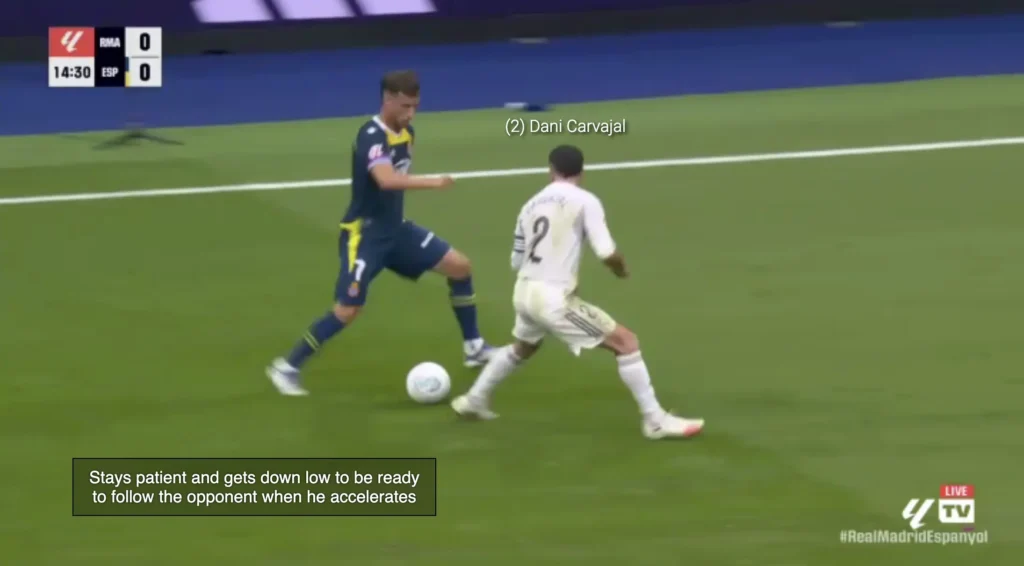
Blocking crosses and shots becomes equally important. Top fullbacks use sharp reactions and compact positioning to anticipate deliveries — as seen in Dani Carvajal’s defensive work for Real Madrid, where his ability to read the play and step in front of crosses prevents countless chances.
Defending Crosses from the Far Side
A subtle but vital aspect is defending the back post when the ball is crossed from the opposite flank. The far-side fullback must track runners, judge flight trajectories, and time aerial duels.
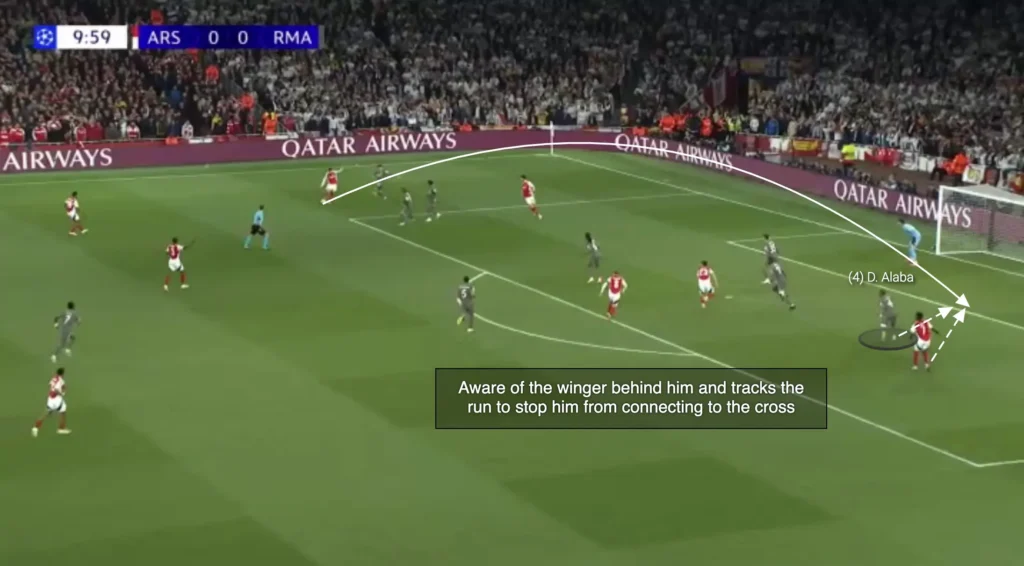
This is an area that often separates elite defenders from average ones — players like David Alaba or Jurriën Timber excel through constant scanning and disciplined body shape.
3. Contribution to the Build-Up
The fullback’s role in possession begins long before the final third. Against high-pressing teams, their ability to offer controlled solutions under pressure can determine whether the team escapes the press or loses territory.
Finding Solutions Under Pressure
In elite football, wide defenders are often the release points in build-up. Scouts should look for players who show composure when pressed — those who can play one-touch combinations, disguise passes, or drive forward to break the press.
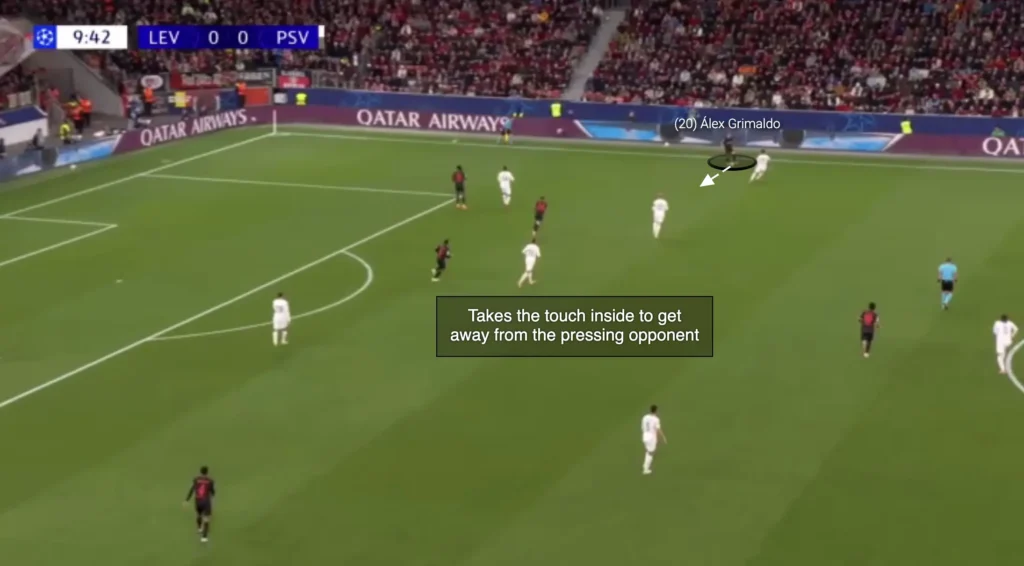
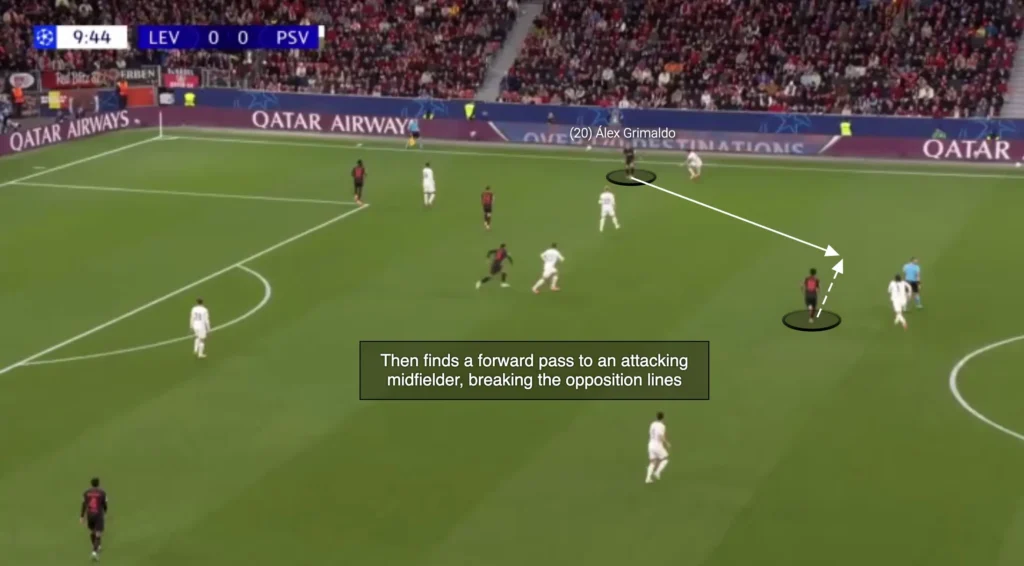
In positional systems, the fullback’s passing angles often dictate the rhythm of progression. Look for body orientation when receiving: does the player open their hips to see both the inside and outside? Do they scan before the pass arrives? These are the subtle markers of press resistance.
Examples include Oleksandr Zinchenko, who consistently uses small feints and passing angles to create space, or Alejandro Grimaldo, whose left-footed control allows him to switch play under pressure.
Dribbling and Retention
Equally important is the capacity to carry the ball past pressure lines. In more direct systems, fullbacks who can break a press by advancing with the ball — like Theo Hernandez or Pedro Porro — provide vital outlets in transition.
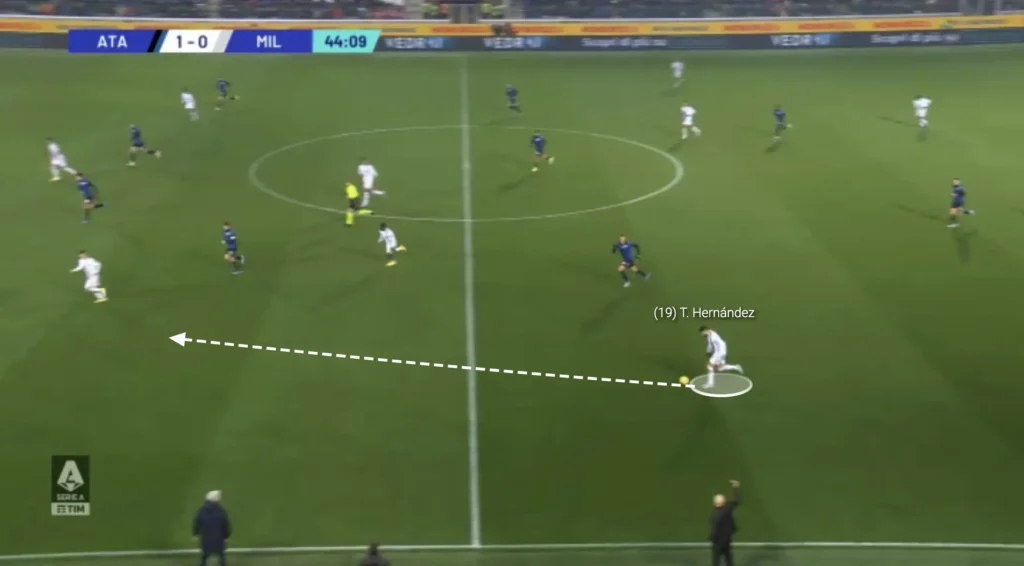
Scouts assess not just dribbling ability, but decision-making: when to drive, when to pass, and how to protect possession.
4. Contribution in Chance Creation
In the modern game, a fullback’s attacking output is no longer supplementary — it’s essential. Their contribution can come in two ways: creating chances for themselves and for teammates.
Self-Creation: Runs and Dribbles
Attacking fullbacks must time runs beyond the winger to stretch defenses vertically. Their movement creates width, pins the last line, and offers overloads in the final third. Watch for how well a player reads the moment to advance — not too early to be caught offside, not too late to lose the advantage.
Once in advanced areas, 1v1 dribbling becomes critical. Some players, like Denzel Dumfries or Nuno Mendes, attack defenders directly, using pace and agility to reach the byline or cut inside for a shot.
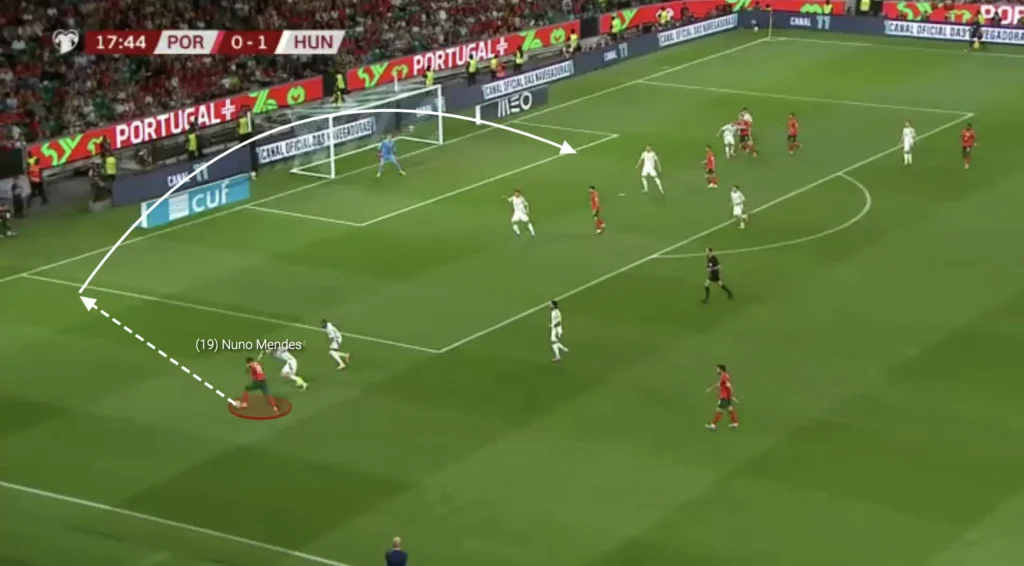
Creating for Others: Crosses and Passes
The modern fullback is often a team’s primary wide creator. The quality of their final delivery can define their value. Scouts should assess crossing variety — early, cut-back, chipped — and execution consistency. A fullback who can recognize different types of runs (near-post, far-post, cut-back zones) demonstrates strong tactical understanding.
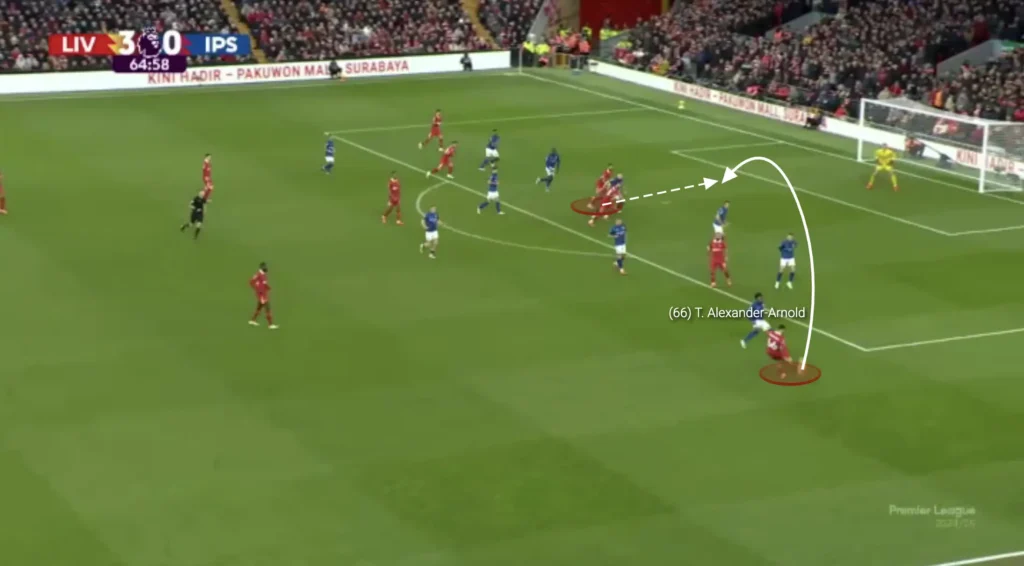
In more relational or possession-based systems, like Pep Guardiola’s inverted fullbacks, creativity might come through underlapping runs or passes into the half-space rather than traditional wide deliveries. The key remains the same: recognition of attacking patterns and timing.
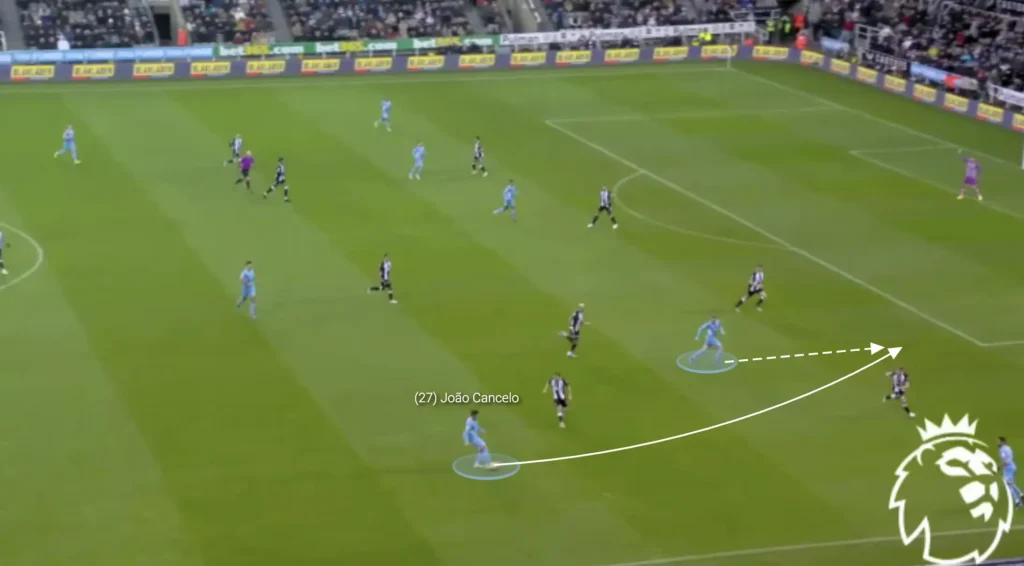
Conclusion: The Multi-Phase Fullback
Scouting fullbacks today is about understanding contextual versatility. The role sits at the intersection of defense and attack, structure and freedom, control and chaos.
An elite fullback must:
- Defend high, managing both pressing and recovery runs.
- Defend low, dominating duels and protecting the box.
- Build play under pressure with composure and vision.
- Create chances through intelligent movement and delivery.
In essence, the wide back of the modern era is both a defender and a playmaker — an athlete, technician, and tactician in one. The scout’s challenge is to find balance: a player capable of adapting to the team’s system, line height, and game model, while still possessing the individual tools to make a difference in every phase of play.
The evolution of the fullback is, in many ways, the story of modern football itself — a constant expansion of responsibility, intelligence, and influence.
